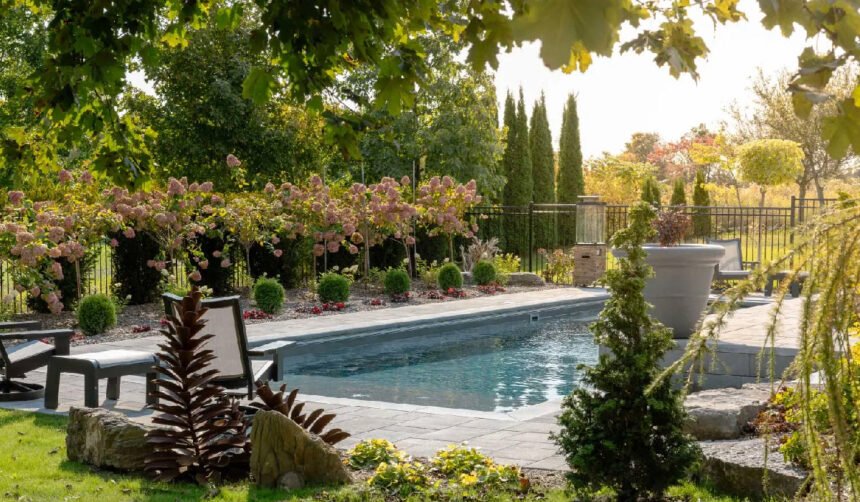The idea of having a beautiful, custom swimming pool in your backyard isn’t just about leisure—it’s about lifestyle, relaxation, fitness, and creating a space for unforgettable memories. Whether you’re dreaming of a serene oasis, a fun zone for kids, or a luxurious resort-like space, hiring the right Pool Builder is the key to bringing that vision to life.
Constructing a pool is a major investment. It’s not just about digging a hole and filling it with water; it’s about planning, design, materials, safety, and long-term functionality. This guide walks you through everything you need to know about choosing a professional pool builder, the steps in the pool construction process, current design trends, and important factors to consider before diving in.
Understanding the Role of a Pool Builder
A Pool Builder is a specialized contractor responsible for designing, engineering, and constructing swimming pools. Their role involves much more than construction—they’re involved from concept to completion and often handle permits, inspections, plumbing, and finishing touches like decking and lighting.
The best pool builders don’t just build pools—they create environments tailored to your preferences, lifestyle, and property constraints. Their expertise ensures your pool is not only beautiful but also safe, efficient, and compliant with all relevant codes and regulations.
The Pool Construction Process
Building a pool is a multi-phase project that requires planning, precision, and patience. Here’s a breakdown of the typical steps involved:
1. Initial Consultation and Site Evaluation
Every project begins with a consultation where the pool builder assesses your property, listens to your ideas, and discusses your budget. Site factors like elevation, soil conditions, and space availability will shape the design.
2. Design and Planning
Using 2D or 3D modeling software, the builder will create a design based on your needs. You’ll choose features like pool shape, depth, entry points, lighting, water features, materials, and surrounding landscaping.
3. Permitting and Engineering
Once the design is approved, the builder will obtain necessary permits and ensure the pool plan complies with zoning laws, HOA guidelines, and safety regulations.
4. Excavation
Heavy equipment is brought in to excavate the pool area according to precise measurements. This step sets the stage for the rest of the build.
5. Steel, Plumbing, and Electrical Work
Steel rebar is used to create a framework for the pool shell. Plumbing lines are installed for circulation, filtration, and heating systems. Electrical work is done for lights, automation systems, and equipment.
6. Gunite or Shotcrete Application (for Concrete Pools)
The concrete shell is applied and shaped, then left to cure. This step can take several days, depending on the size and complexity of the pool.
7. Tiling, Coping, and Decking
Aesthetic and functional details are added: tile lines, edge coping (the top edge of the pool), and surrounding deck materials.
8. Interior Finish
The pool interior is finished with plaster, pebble, quartz, or other materials. This is what gives the pool its color and texture.
9. Filling and Startup
Once the finish heals, the pool is filled with water. The builder balances chemicals and tests equipment to ensure everything functions correctly.
10. Final Walkthrough
The builder walks you through your new pool, explains how to use the equipment, and provides maintenance recommendations.
Types of Pools a Pool Builder Can Create
There are several types of pools, each with different construction techniques, costs, and benefits:
Concrete Pools
- Highly customizable in shape and size
- Durable and long-lasting
- Can include custom features like waterfalls, grottos, and tanning ledges
- Longer build time and higher initial cost
Fiberglass Pools
- Pre-manufactured shells installed into the ground
- Faster installation (typically 1–2 weeks)
- Lower maintenance due to non-porous surface
- Limited shapes and sizes compared to concrete
Vinyl-Liner Pools
- Cost-effective option
- Soft surface that’s gentle on feet
- Liner replacement needed every 7–10 years
- More customizable than fiberglass, less than concrete
Features to Consider When Building a Pool
Today’s pools are more than just rectangles with a diving board. A modern pool builder can integrate a variety of features to enhance functionality, safety, and enjoyment:
- Waterfalls and fountains
- LED lighting and color-changing lights
- Infinity edges or vanishing edges
- Sun shelves or tanning ledges
- Swim-up bars or in-water seating
- Fire features for contrast
- Spas or hot tubs integrated into the design
- Automated covers and pool automation systems
Pool Design Trends
If you want your pool to feel current and stylish, consider incorporating some of these design trends:
- Minimalist and geometric shapes: Clean lines and rectangular forms dominate modern pool design.
- Dark interior finishes: Deep blues and blacks create a lagoon-like effect and make water look more reflective.
- Natural materials: Stone coping, wood decking, and greenery blend the pool into the landscape.
- Smart technology: App-controlled pumps, lights, and heaters add convenience and energy efficiency.
- Sustainable systems: Saltwater chlorination, solar heating, and variable-speed pumps reduce environmental impact.
Choosing the Right Pool Builder
The outcome of your pool project depends heavily on who you hire. Here are key tips for choosing the right Pool Builder:
1. Check Credentials
Make sure they are licensed, insured, and certified. Look for affiliations with industry organizations like the Pool & Hot Tub Alliance (PHTA).
2. Review Past Work
Ask to see a portfolio of completed projects. This gives you insight into their design style, craftsmanship, and creativity.
3. Read Reviews and Get References
Client reviews and testimonials reveal a lot about professionalism, timelines, and overall satisfaction.
4. Understand the Contract
A reputable pool builder will provide a detailed, transparent contract outlining materials, timelines, payment schedules, and warranties.
5. Communication is Key
Choose a builder who listens to your needs, explains the process clearly, and is responsive during planning and construction.
Timelines also vary:
- Fiberglass: 1–3 weeks
- Vinyl: 3–6 weeks
- Concrete: 8–12+ weeks
Make sure your builder provides a realistic budget and timeline based on your choices and site conditions.
Maintaining Your Pool After Installation
Your relationship with the pool doesn’t end after the final walkthrough. Proper maintenance is essential for longevity and safety:
- Test and balance water chemistry weekly
- Clean filters, skimmers, and surfaces regularly
- Monitor water levels and adjust as needed
- Schedule seasonal inspections and professional servicing
- Use covers to reduce debris and evaporation
Your Pool Builder can recommend maintenance routines or refer you to pool service providers.
Conclusion
Building a pool is one of the most rewarding property improvements you can make—but it requires planning, knowledge, and the right professional partner. A skilled Pool Builder ensures your project is completed safely, on time, and with results that reflect your vision and lifestyle.
Whether you’re imagining a sleek modern retreat or a fun family hub, the right builder brings your dream to life—turning a backyard into a destination.
For More Information, Visit Dotmagazine









